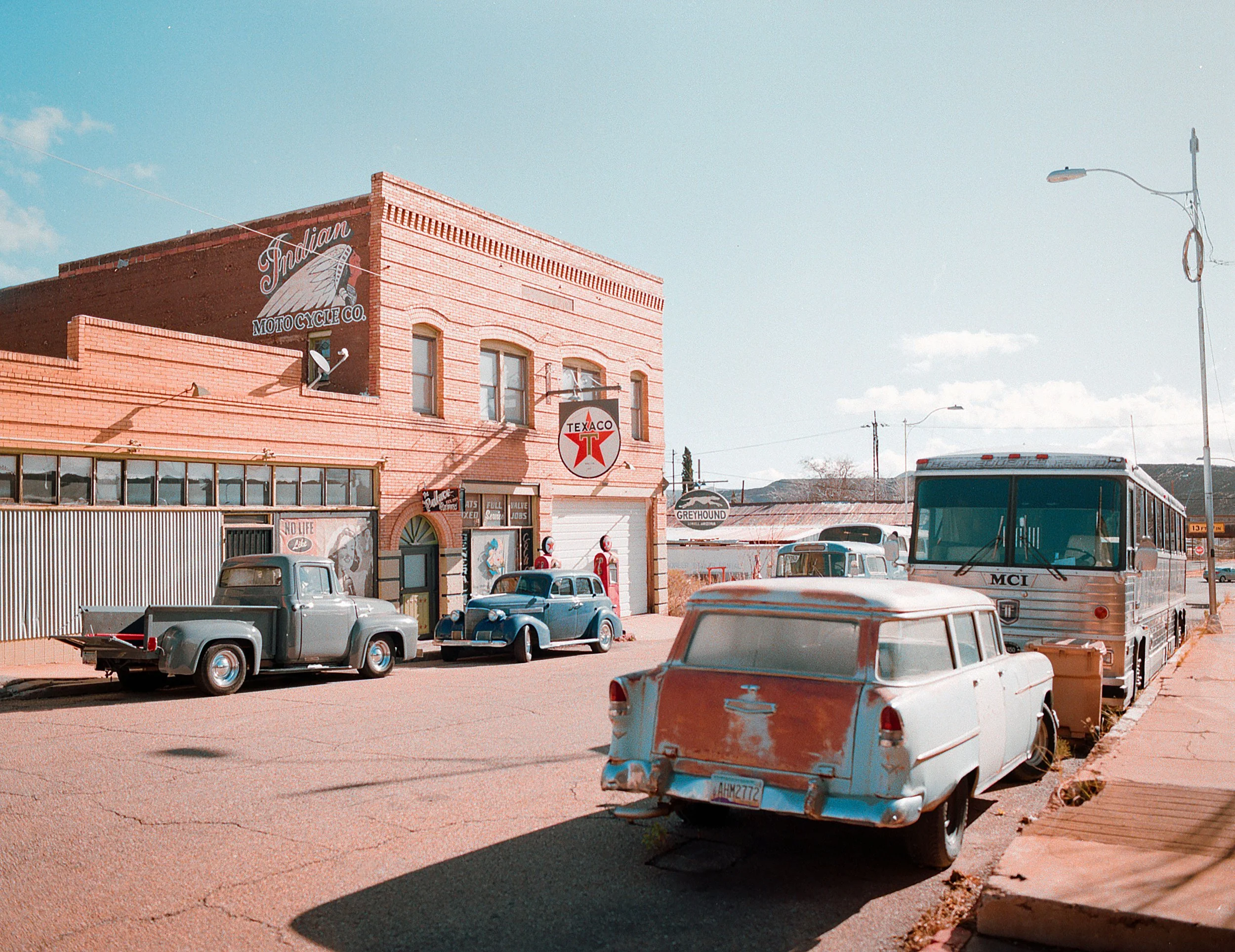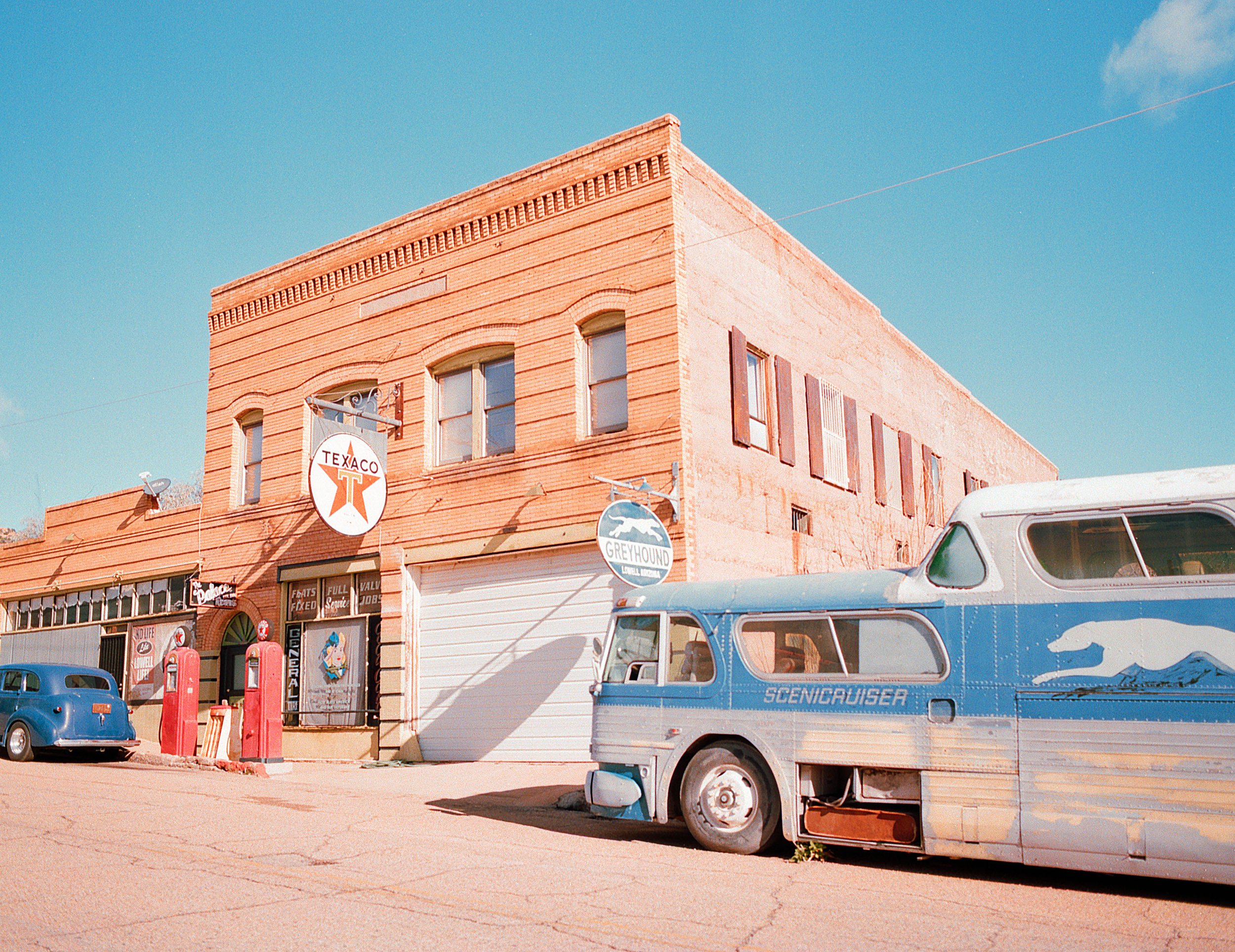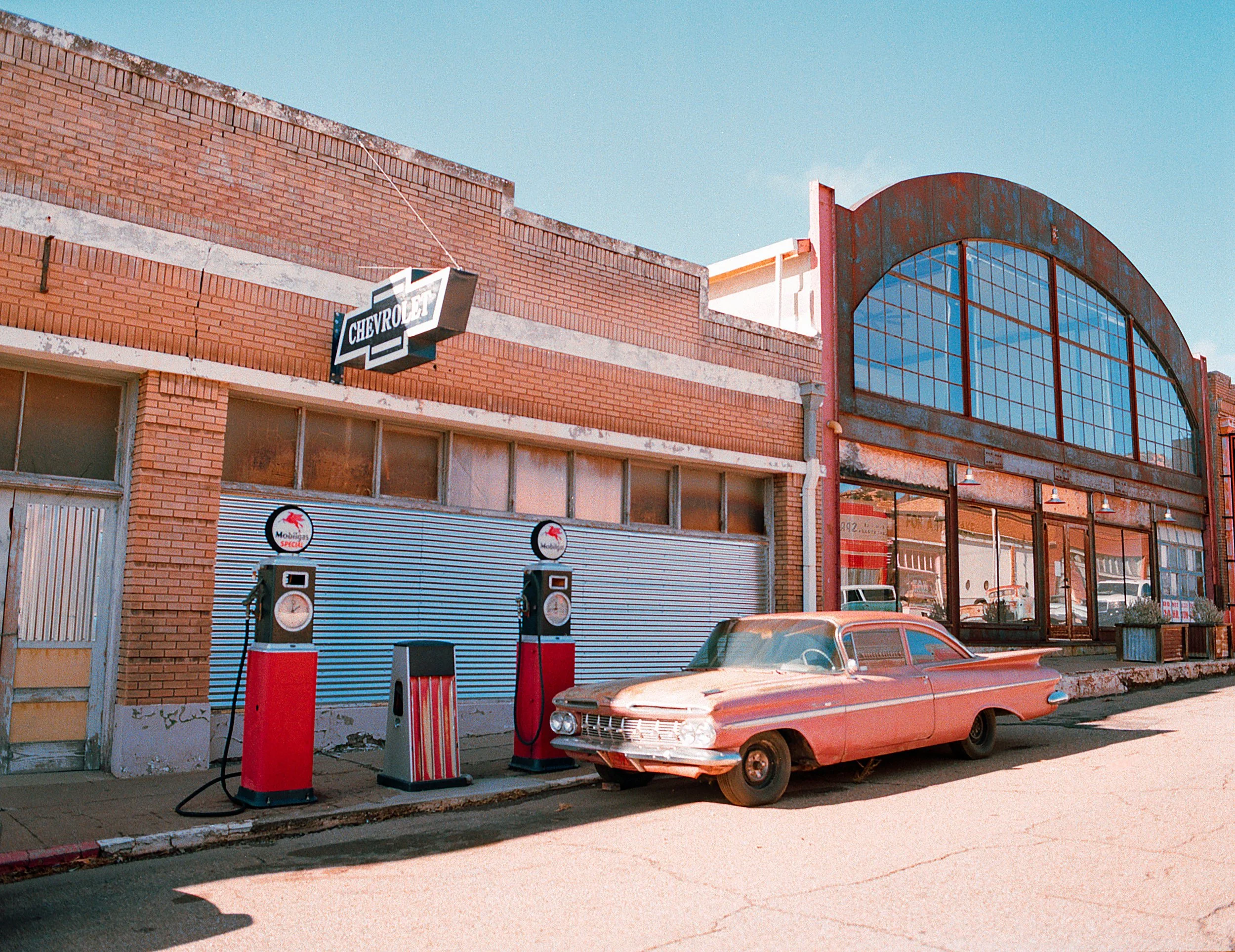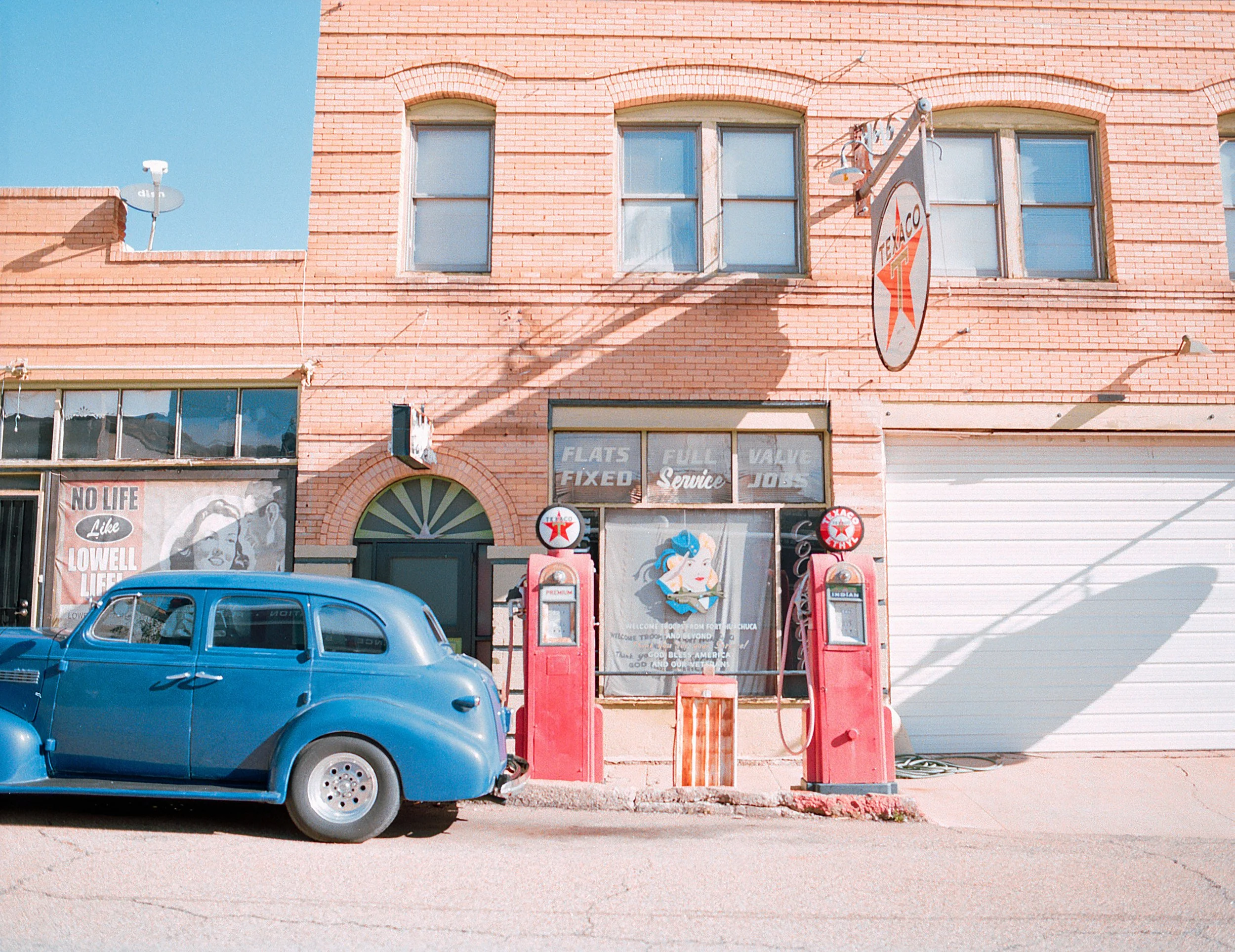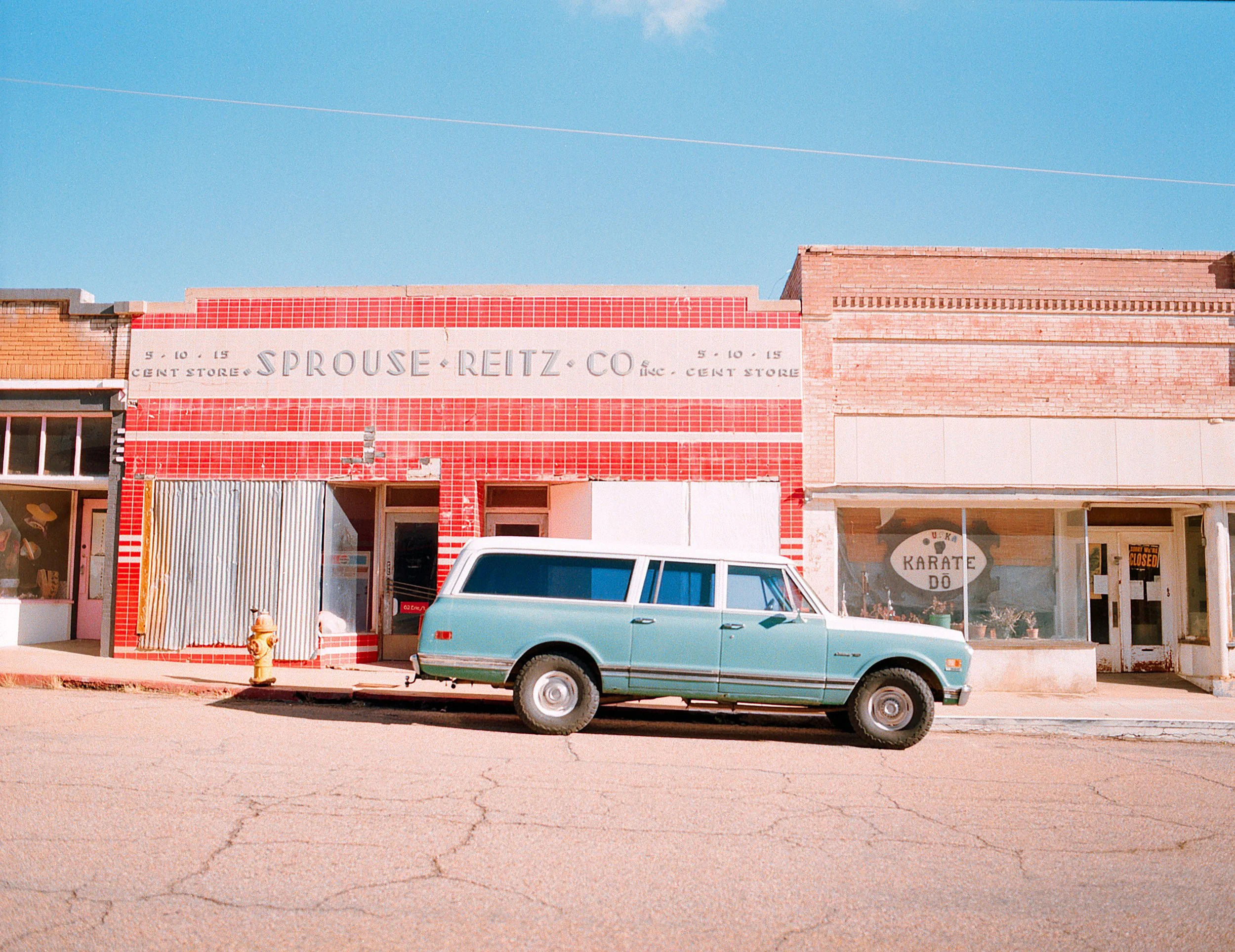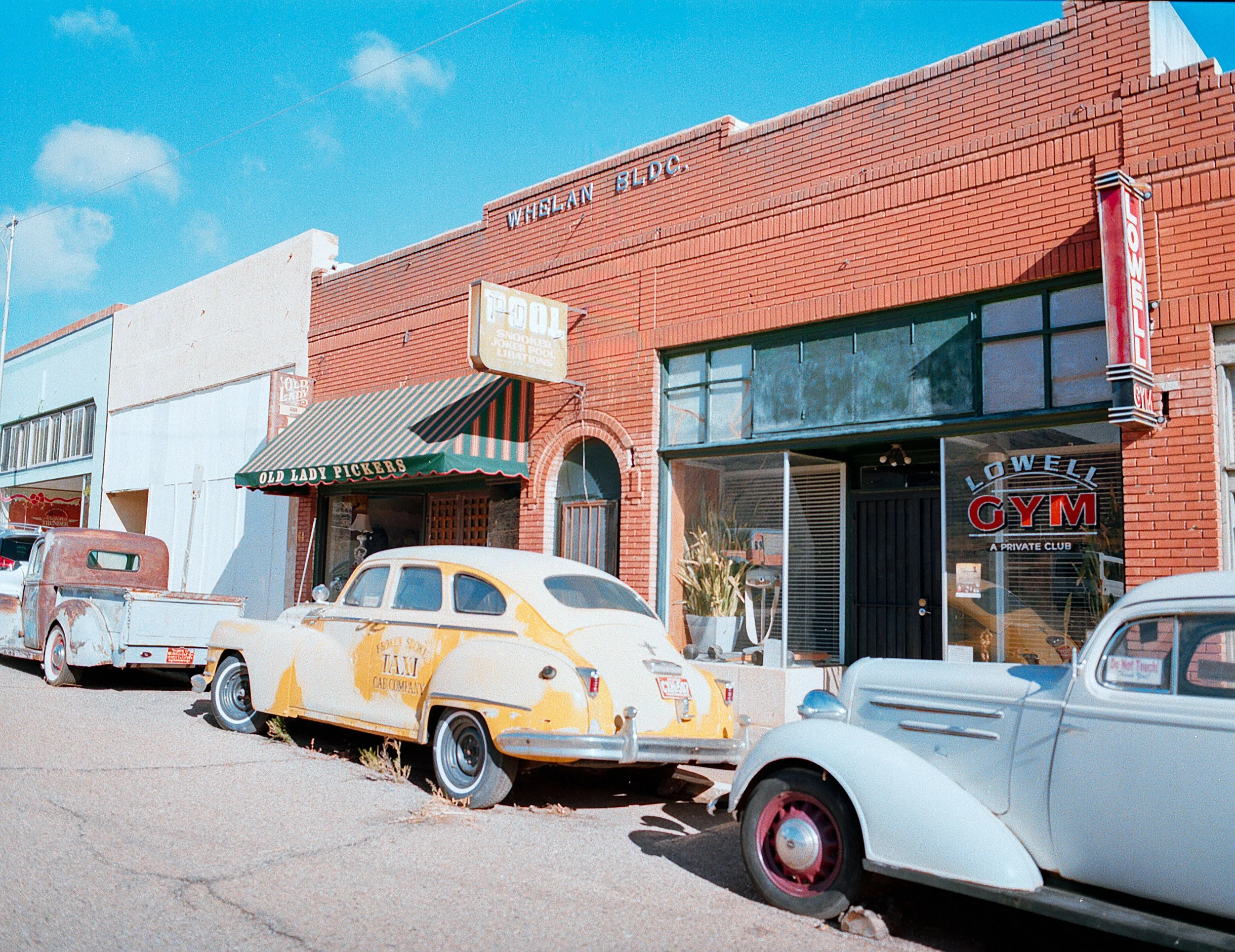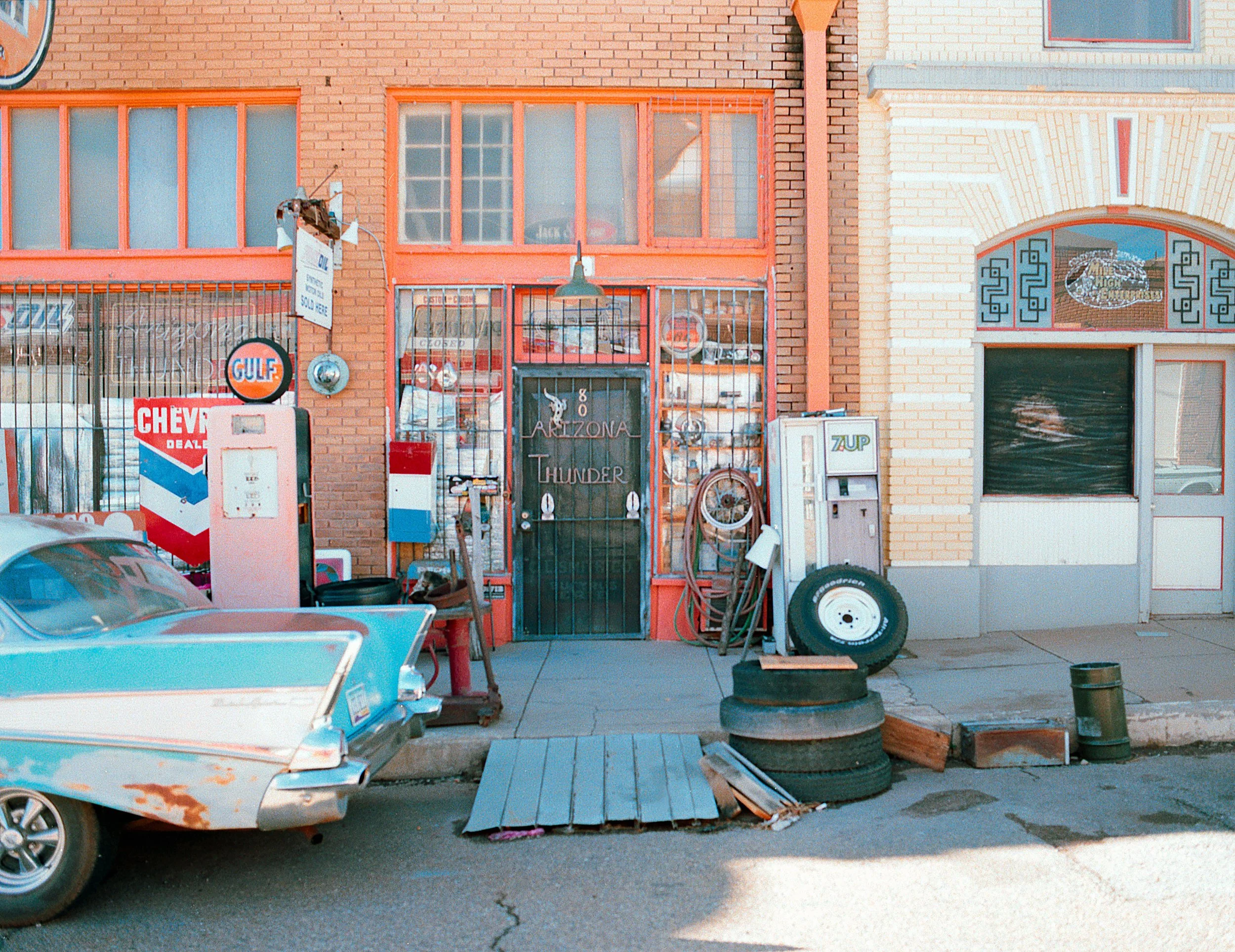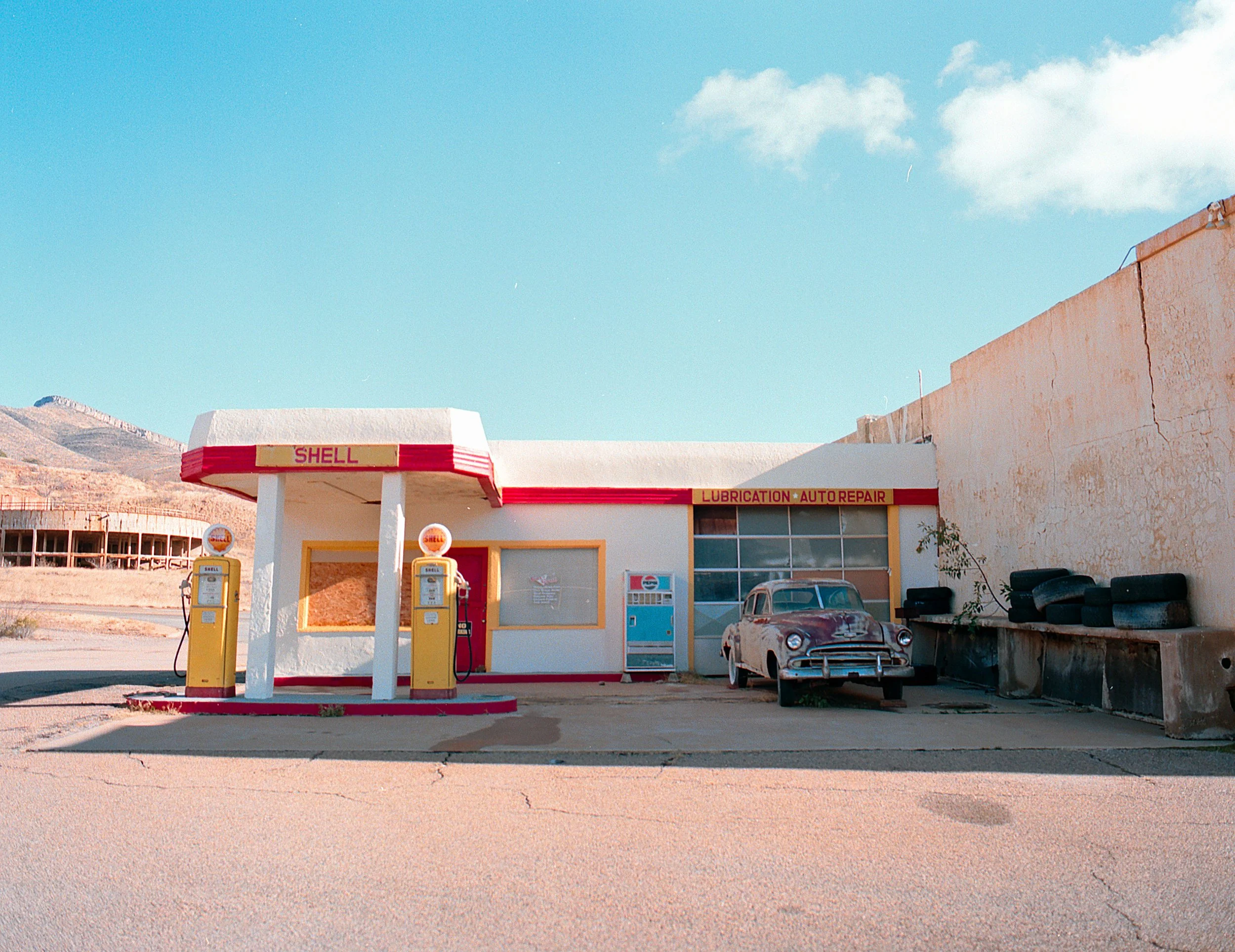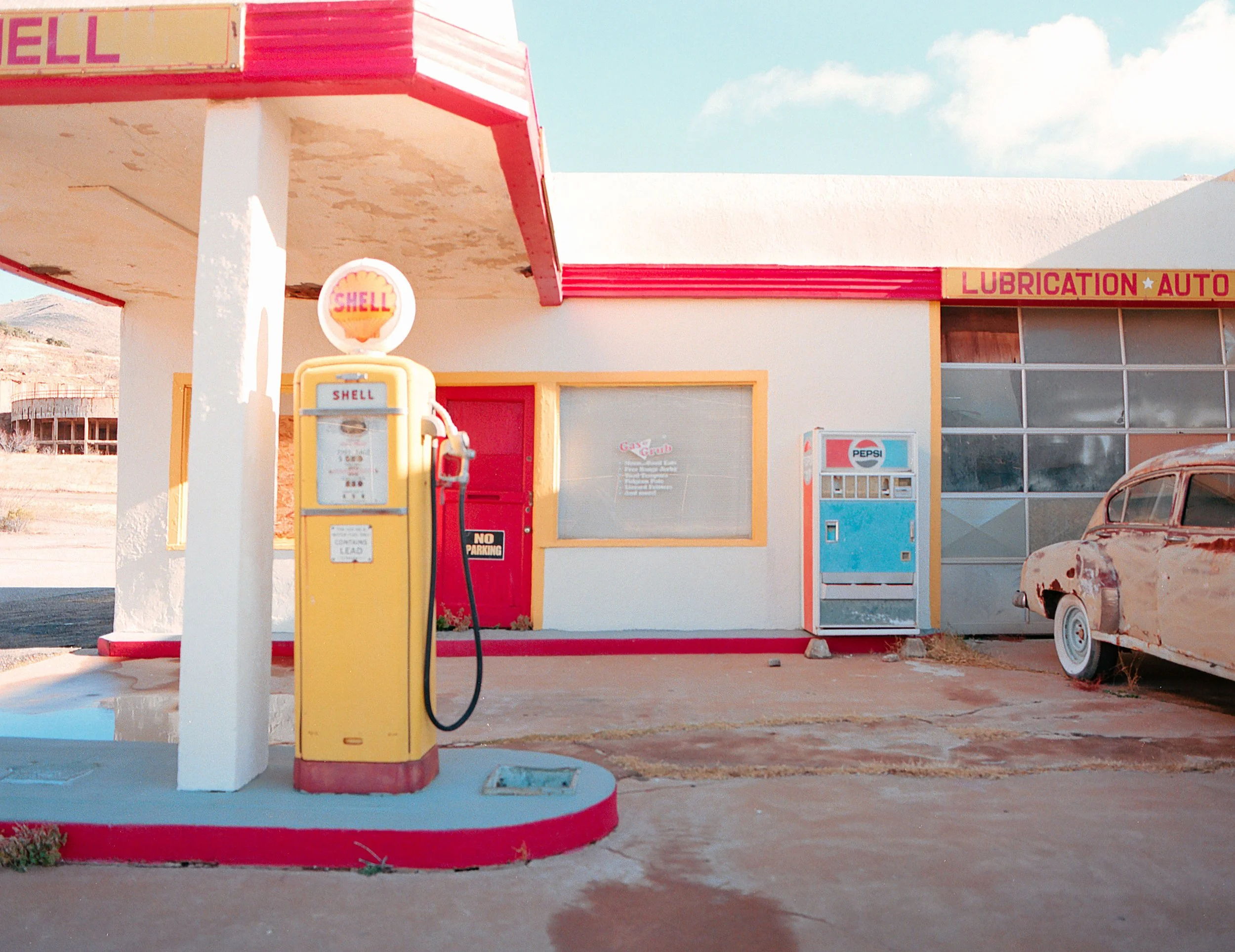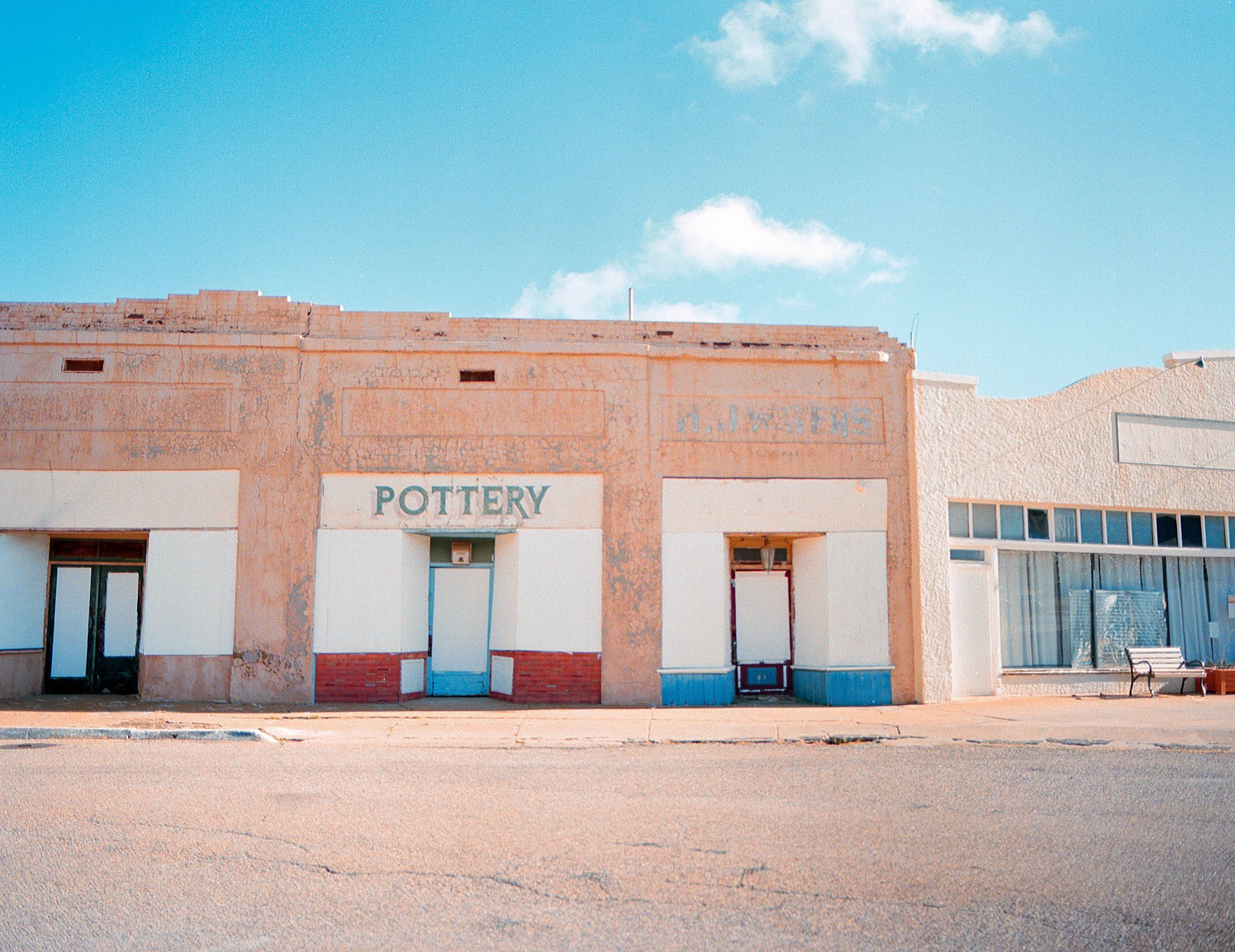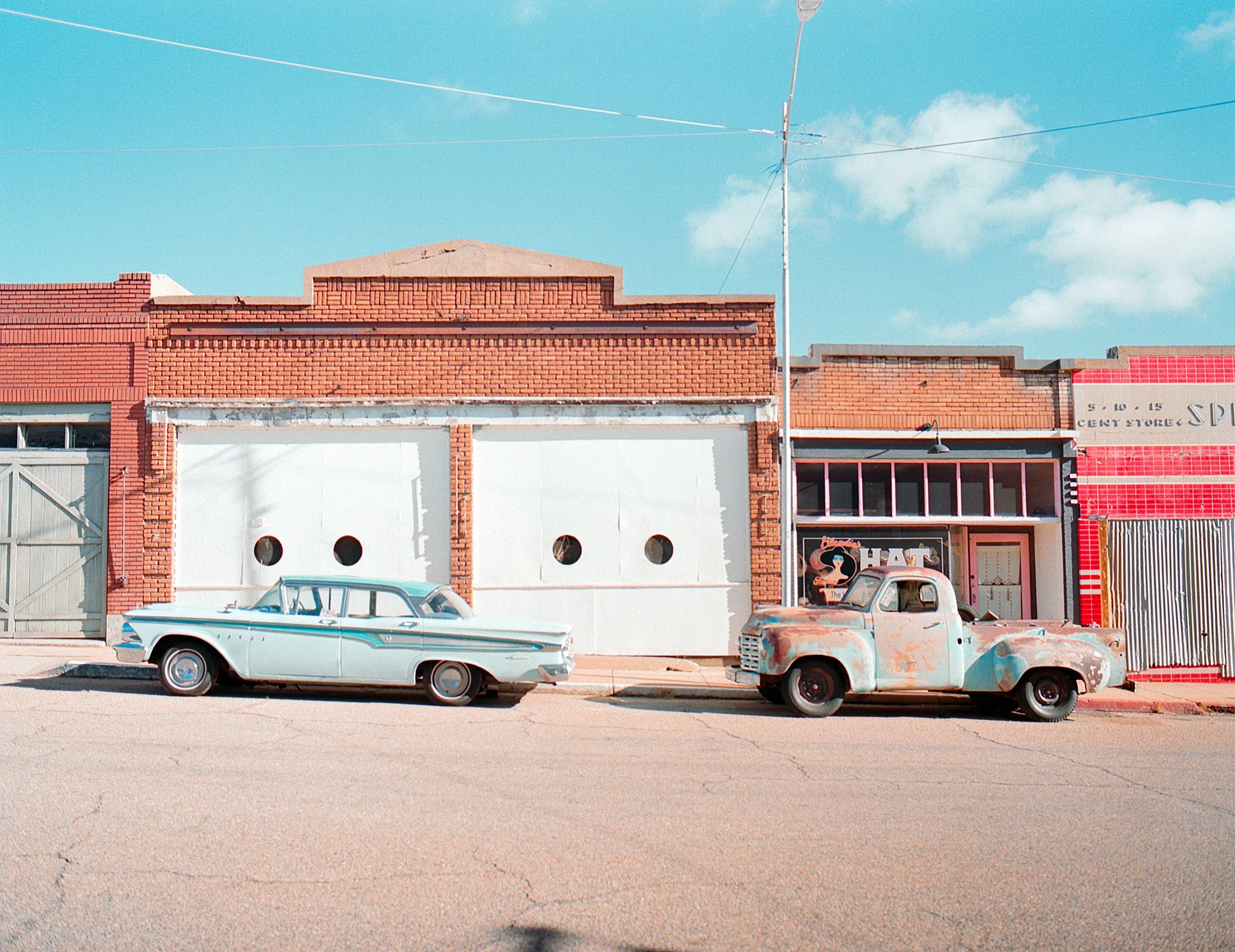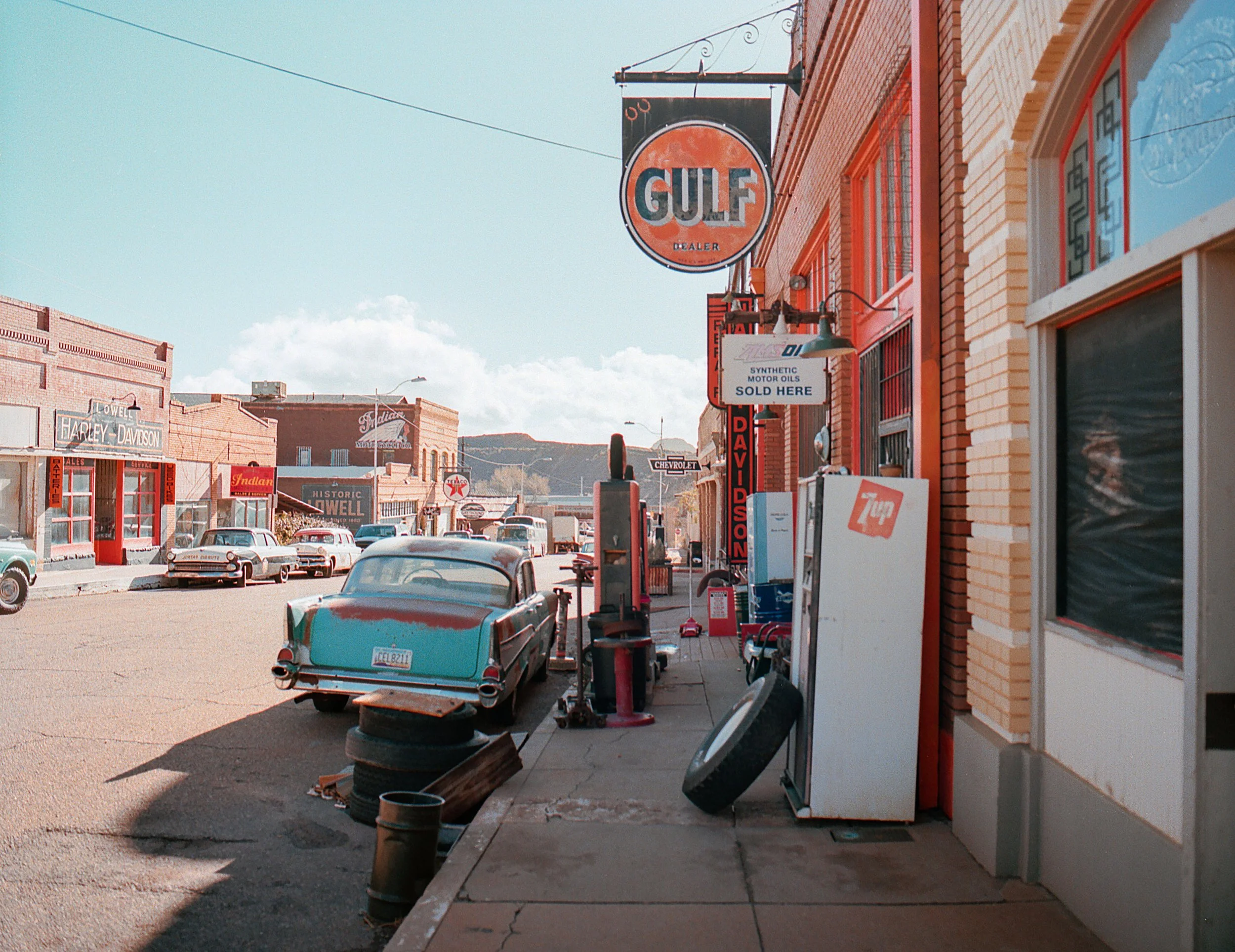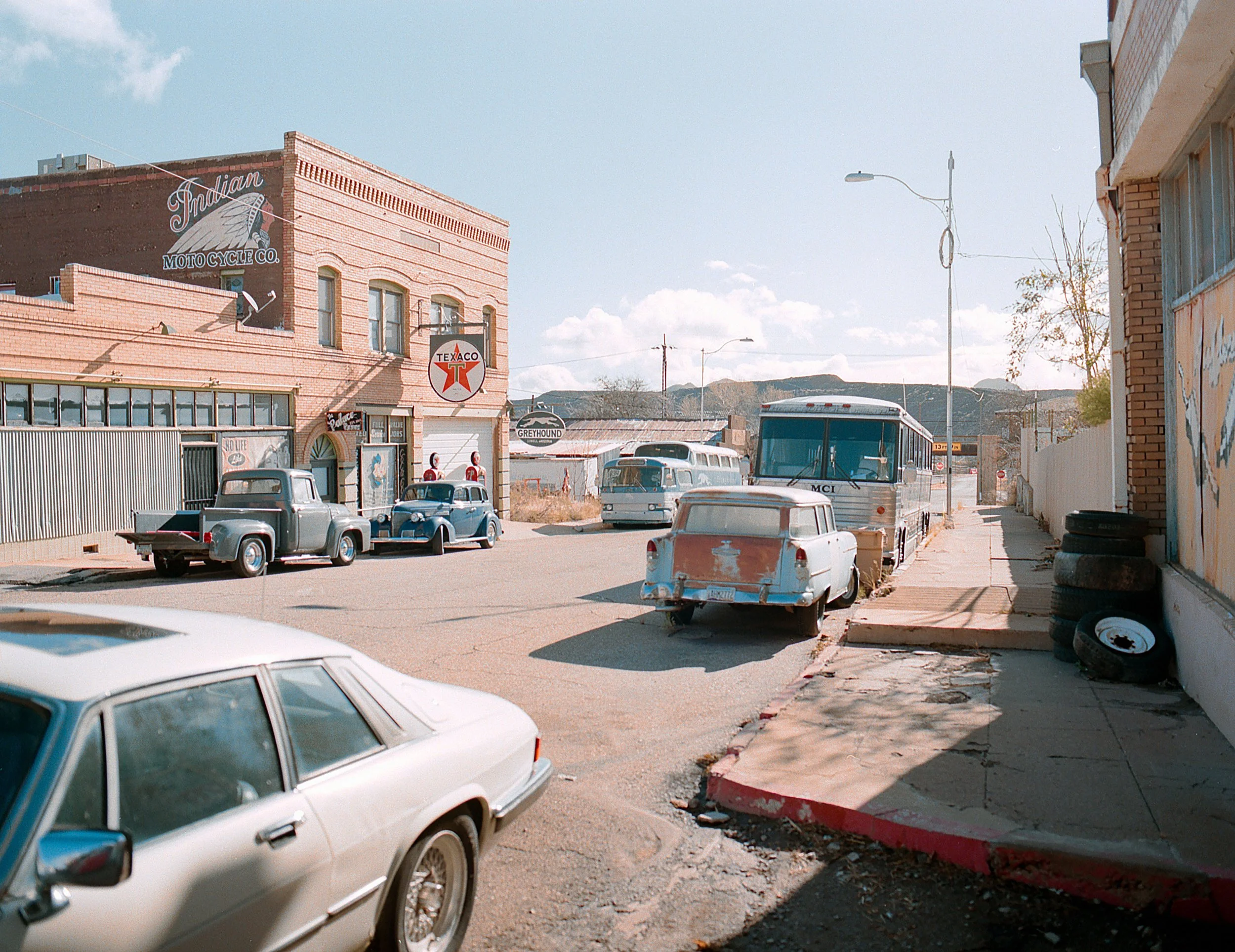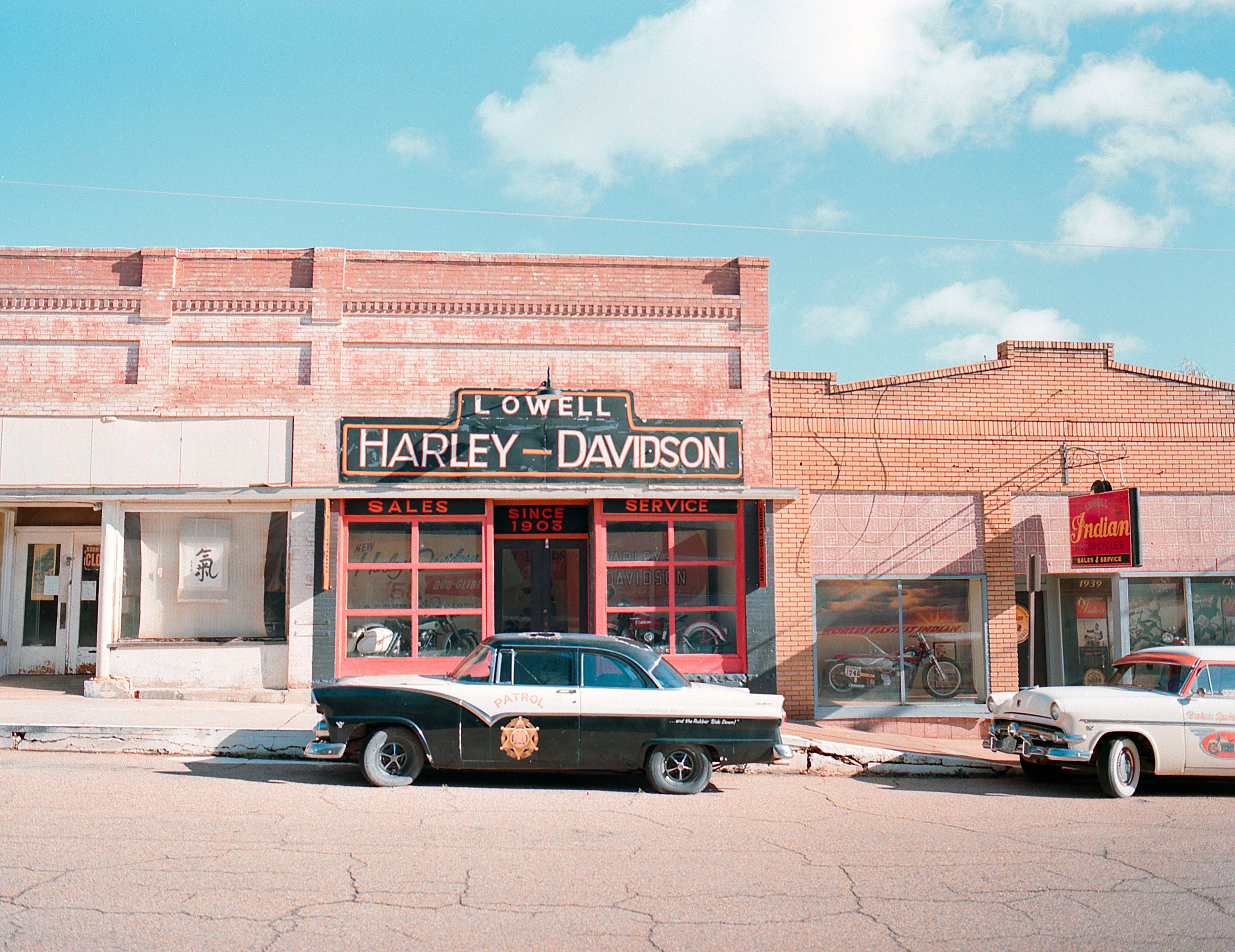Queen of the Copper Mine
On New Year's Day in 2023, I awoke to several phone calls from the National Park Service alerting me that my trip to the Grand Canyon had been canceled. An epic winter storm had come through the night before dumping a foot of snow throughout the park and closing the roads along the way.
Never one to shy away from a challenge – and with only an hour to pack and check out of my hotel – I decided to head down to Tucson instead. I pride myself on being prepared in these situations. But the truth is that the Grand Canyon had been on my bucket list for years and I was too blinded by the idea of finally going to make any solid back up plan.
I found Tucson to be quite charming. So much that I drove every inch I could in the span of two days, stopping to photograph each neon sign or abandoned building I could muster. With two days left on the trip, I knew I had to do what I always do… bust out a map and find some good, old fashioned back roads.
I spent the next two days taking the long way down to Bisbee, a town that I’d once heard referred to as “a photographer’s paradise.” I visited every off-the-beaten-path ghost town I could find along the way – Gleeson, Courtland, and Tombstone to name a few. But the real prize came when I discovered the tiny little community of Lowell.
Lowell, Arizona was once a booming copper mining community just southeast of Bisbee and 11 miles from the Mexican border. It was settled in 1880 and became the home of the Lowell & Arizona Copper Mining Company by 1899. Lowell’s population soared as demand for copper rose and the mines grew. In 1902, the Lowell Mine took over the Copper Queen Mining Company which allowed the mines to go even deeper, ensuring the success of both the mining industry and the town for years to come.
Soon, nearly half of Bisbee’s population resided in Lowell and a petition was filed to annex the two towns. Lowell established its epicenter along Eerie Street, with the first businesses to open being two saloons and a livery stable. After all, those miners must have been quite thirsty after a long day's work if you catch my drift.
The mines continued to operate for roughly another 70 years, often changing ownership or being leased to new companies before shuttering completely in 1975. Though it’s unclear how the name Copper Queen came to be, it’s obvious that copper ruled both of these towns until it couldn’t anymore, thus becoming the title of this book.
These days all that’s left of Lowell are the old buildings along Eerie Street, complete with classic cars lined up outside as if no one ever left. The appropriately named Eerie Street is a time warp transporting you straight back to the 1950s. Though Bisbee had been highly recommended for a visit, it was Lowell that captured my attention. The results were these 20 photographs and a hilarious postcard that says, “Welcome to Bisbee – come see our Big Ass Hole!”
Fond memories if you ask me.
These images were taken medium format film using a Mamiya 645.


